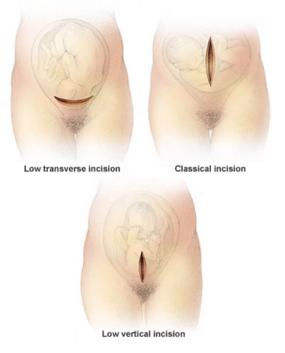If we talk about birthing in clinic, we would normally discuss optimised breathing patterns, core stability and intra abdominal pressure pre birth to ensure you are in as good a place as possible for the delivery, hopefully lessening the need for a section or other interventions etc (and more so if VBAC is planned).
If you already know you’re having an elective Caesarians either through choice, or need, there are still options, and personally I feel they should be explored with your obstetrics consultant ahead of time to ensure you get the care you are happy with #ChooseAndBook
So what are you discussing? Well I’m sure there is lots you want to understand and clarify before the big day, it’s a major procedure, but one of the crucial things from a rehabilitative perspective is the dermal incision that will be made to deliver the baby.
*For clarity, i only mean skin incisions, NOT what happens once in the abdominal cavity !!!
There are three routes of entry, low transverse (or Pfannenstiel), classical, or low vertical incision which can be made.
Increasingly the low transverse is used in the UK, leaving a scar which is usually low enough to be easily hidden visually.
There are advantages and disadvantages from a surgical perspective with each incision type. Depending on which research is read, the its country of origin, depends largely on the outcome. One comparative study looked at ‘619 cesarean deliveries performed by midline incision with 328 performed by Pfannenstiel skin incision and found no difference in postoperative complications such as wound healing or wound hematoma.’
The pluses and minuses for each should be discussed for you particular circumstance, all things being equal, I would prefer to see more vertical incisions.
From a rehab / neuromuscular point of view these tend to create less issues post operatively (back, neck, groin pain etc), as this procedure completely avoids the conjoint tendon and all major muscle bellies of the abdominal muscles in the intrinsic and extrinsic core. This in turn means far greater ability to rebuild intra abdominal pressure after surgery, and a less problematic recovery period.
Dr Kathy Dooley, an amazing anatomist and NKT guru, explains the ins and outs in her article below.
Arm yourself with the knowledge, be mindful of the effects of any decision made, and if needed get assistance as soon after the scar has healed as possible.
Anatomy Angel: C-Section Scars and Their Effects on Core Stability

Image credit unknown
Experience the difference – A refreshingly different approach to pain and dysfunction, so you can breathe better, move better, to live better.
